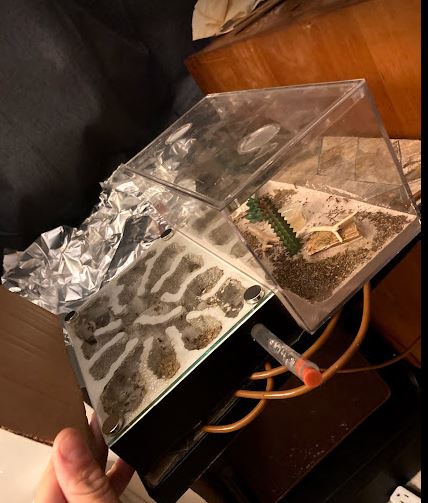
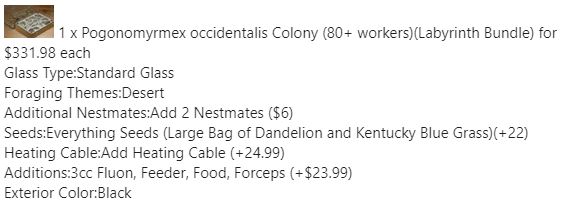

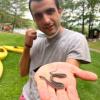



Pogonomyrmex occidentalis (1) | Camponotus pennsylvanicus (6) | Lasius aphidicola (4) | | Tapinoma sessile (3) | Lasius spp. (niger group) (2)
If you feed Pogonomyrmex seeds, you don't need to give them sugar water. I give mine only seeds, with protein as an occasional treat in the form of crickets, fruit flies, mealworms and wet cat food.
but in theory it's fine to just give them the seeds and nothing else. looking forward to whatever else happened.
Starting this July I'm posting videos of my ants every week on youTube.
I like to make relaxing videos that capture the joy of watching ants.
If that sounds like your kind of thing... follow me >here<.
July 2021
For the first month after receiving the colony I was out of state for work. As a result, I had my brother look after them. From what I gathered, the colony first tried to settle in the outworld. However, after setting up an aquarium air pump, they quickly resettled into the nest.
The colony came in a large test tube which was simply placed in the outworld with the cap off. The THA nest I'm using has two water wells on opposite sides of the nest. After one side dries out, the other side is watered so that the temporary dry period prevents mold from growing.
These photos were taken 10 days after receiving the ants.
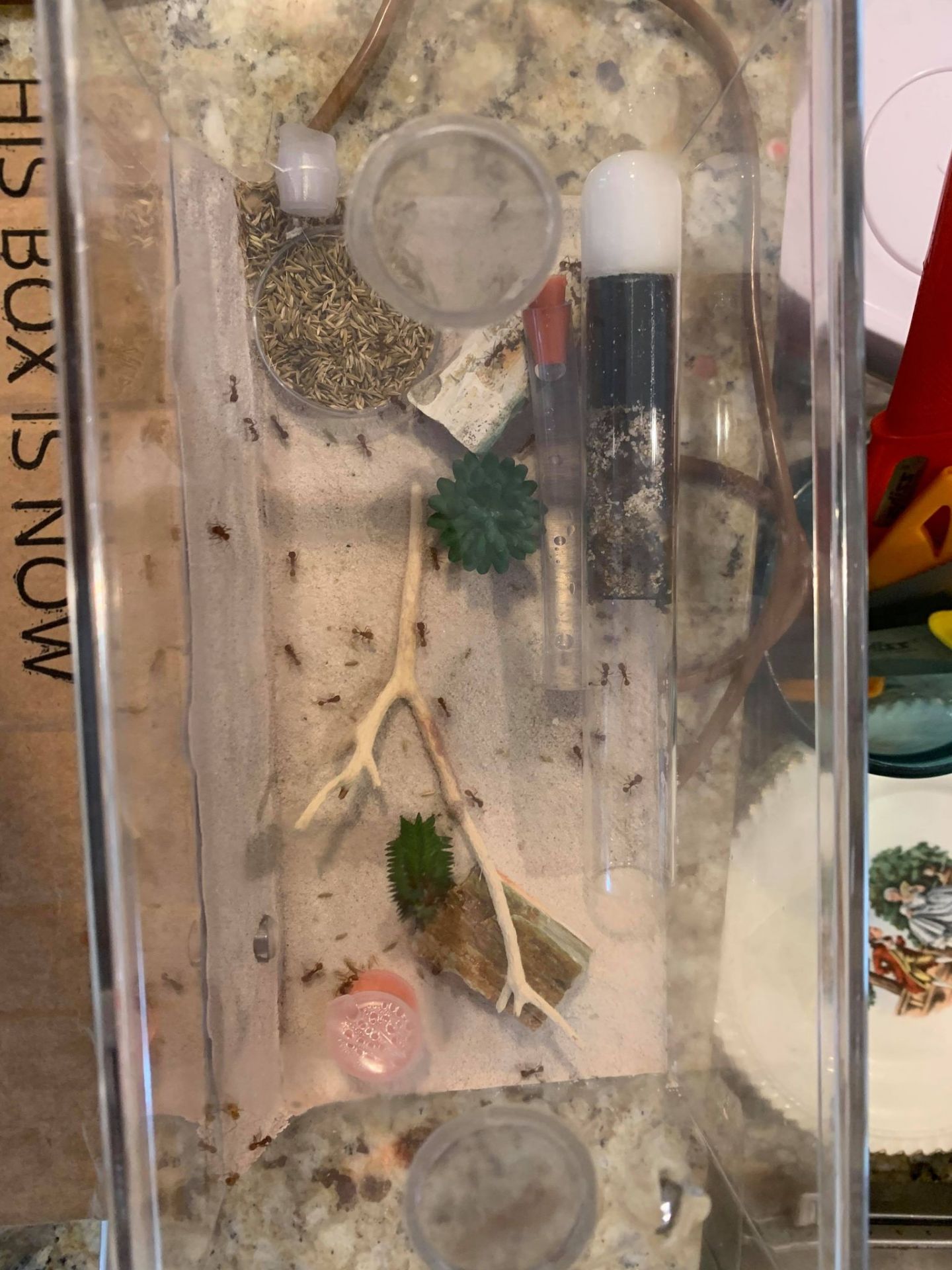
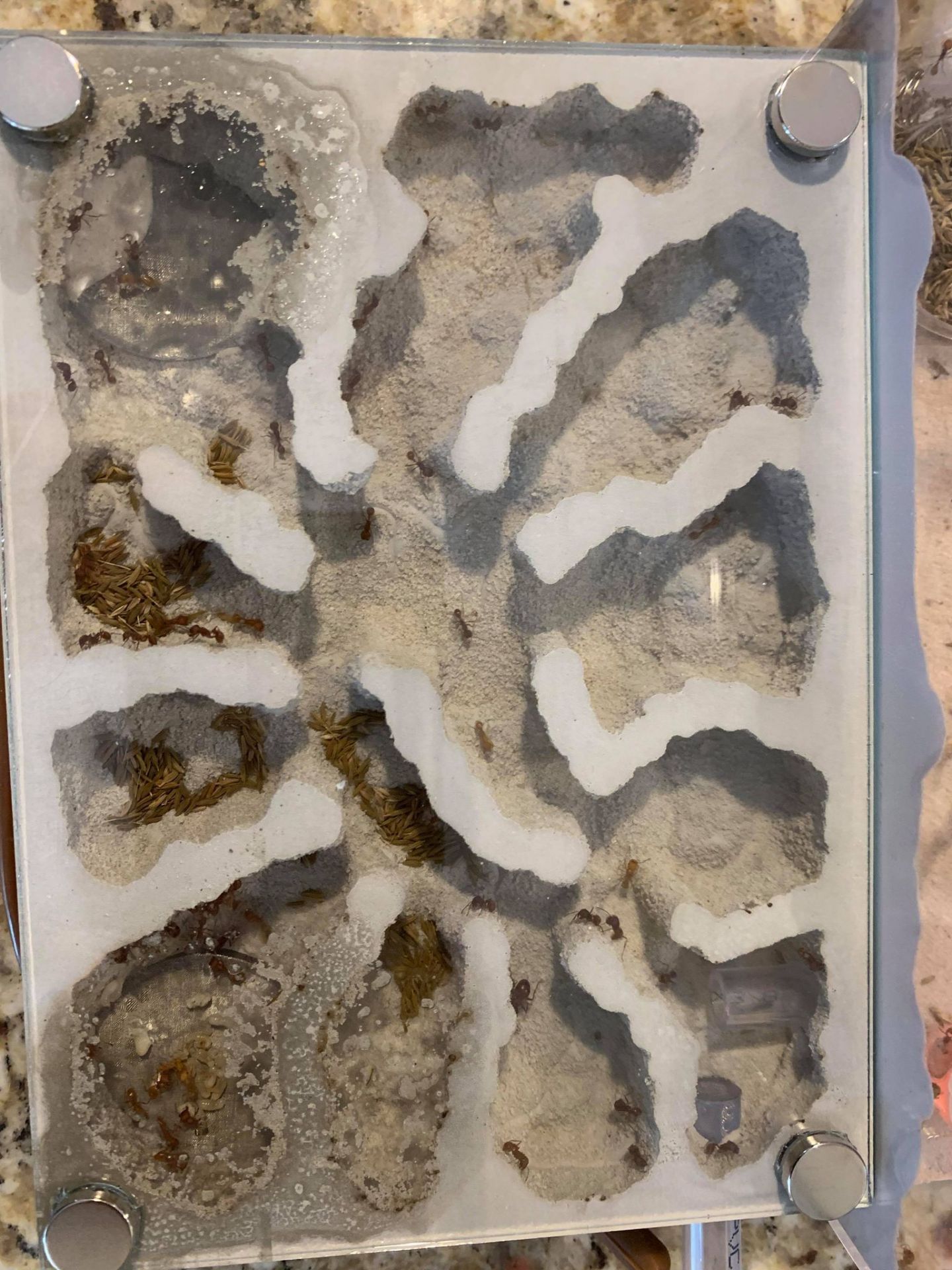
Edited by Arachnids, September 2 2021 - 1:47 AM.
Pogonomyrmex occidentalis (1) | Camponotus pennsylvanicus (6) | Lasius aphidicola (4) | | Tapinoma sessile (3) | Lasius spp. (niger group) (2)
If you feed Pogonomyrmex seeds, you don't need to give them sugar water. I give mine only seeds, with protein as an occasional treat in the form of crickets, fruit flies, mealworms and wet cat food.
but in theory it's fine to just give them the seeds and nothing else. looking forward to whatever else happened.
Good to know! I have yet to try any protein other than seeds. Also, I shall try removing the sugar water.
Pogonomyrmex occidentalis (1) | Camponotus pennsylvanicus (6) | Lasius aphidicola (4) | | Tapinoma sessile (3) | Lasius spp. (niger group) (2)
Currently kept species
L. neoniger, P. occidentalis, C. modoc, C. novaeboracensis, C. vicinus, T. immigrans, A. occidentalis, S. molesta, P. imparis, M. kennedyi, M semirufus, F. pacifica, P. californica, M. ergatogyna.
Previously kept species
T. rugatulus, B. depilis.
Looking for
Myrmecocystus pyramicus, Myrmecocystus testaceus
Pheidole creightoni, Pheidole inquilina, Crematogaster coarctata, Crematogaster mutans
My pogonomyrmex occidentalis colony has a diet of sunburst ant nectar, dandelion seeds, chia seeds, poppy seeds, fruit flies, and fish food flakes. They love it all. I put fluon in their outworld, as they can actually jump a bit, and have attempted to escape. Mack posted a video demonstrating that in the FB group.
Wow what a diversity! Any benefit (or harm) to adding sunburst nectar?
Pogonomyrmex occidentalis (1) | Camponotus pennsylvanicus (6) | Lasius aphidicola (4) | | Tapinoma sessile (3) | Lasius spp. (niger group) (2)
My pogonomyrmex occidentalis colony has a diet of sunburst ant nectar, dandelion seeds, chia seeds, poppy seeds, fruit flies, and fish food flakes. They love it all. I put fluon in their outworld, as they can actually jump a bit, and have attempted to escape. Mack posted a video demonstrating that in the FB group.
Wow what a diversity! Any benefit (or harm) to adding sunburst nectar?
My pogonomyrmex occidentalis seem to enjoy it. I haven't noticed any issues, and their small social stomachs always seem to have it. So I assume they like it? I started with about 20 workers and now have enough to move them from a fallen fortress to a labyrinth.
Currently kept species
L. neoniger, P. occidentalis, C. modoc, C. novaeboracensis, C. vicinus, T. immigrans, A. occidentalis, S. molesta, P. imparis, M. kennedyi, M semirufus, F. pacifica, P. californica, M. ergatogyna.
Previously kept species
T. rugatulus, B. depilis.
Looking for
Myrmecocystus pyramicus, Myrmecocystus testaceus
Pheidole creightoni, Pheidole inquilina, Crematogaster coarctata, Crematogaster mutans
August 20, 2021
On Aug 20th I arrived home from working out of state. Finally, I could meet my new colony. The first thing I did was rig up my dissection scope and usb scope cam to take photos of the nest.
Here is a photo of the photography setup I use.
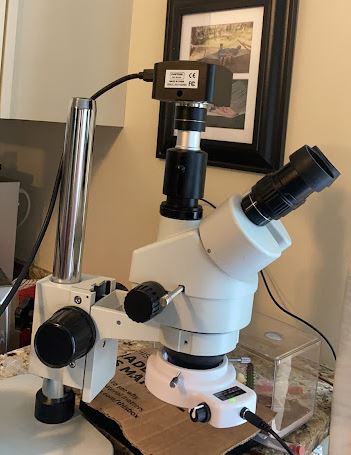
Below are a few photos I took.
Workers tending larvae and pupae atop the water tower. You can see several larvae on the left side are chewing on something. I think this is probably protein extracted from the seeds.
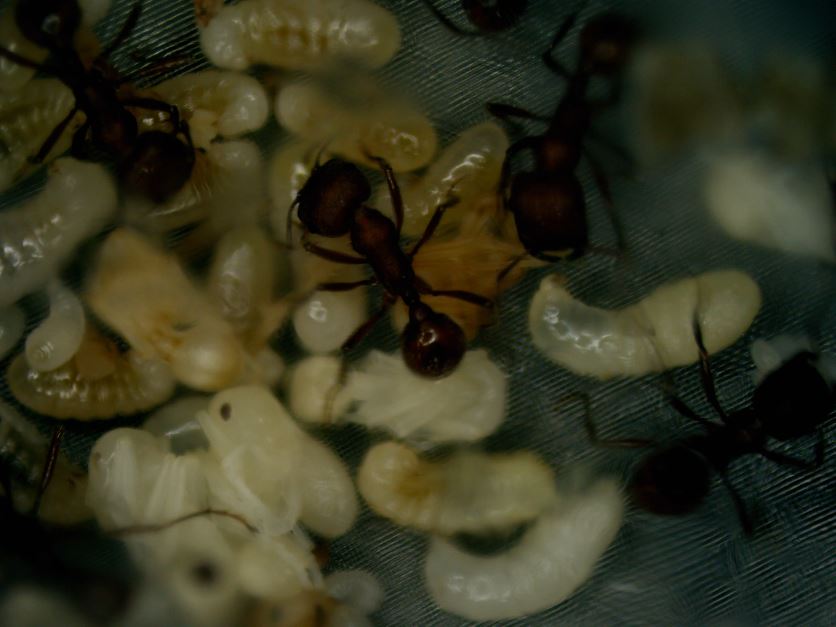
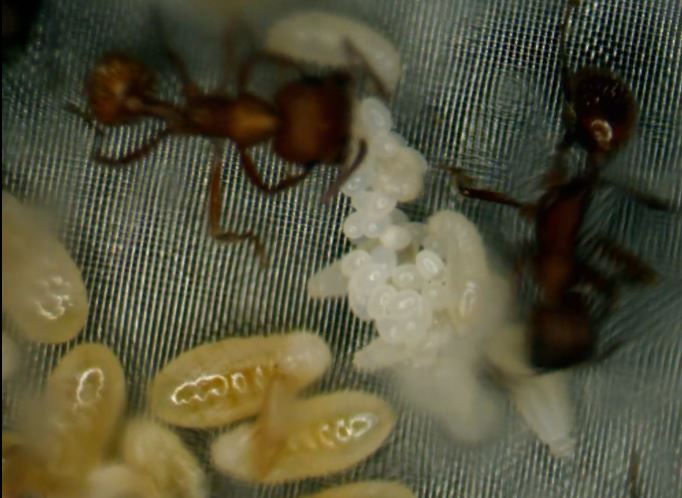
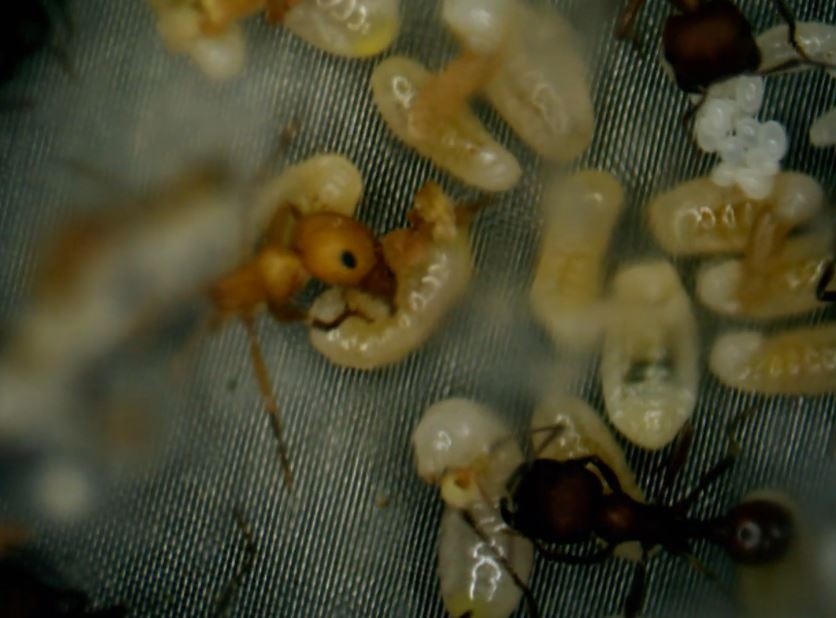
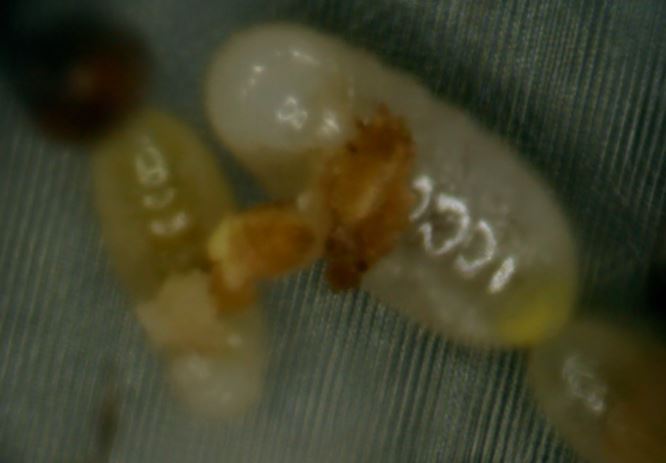
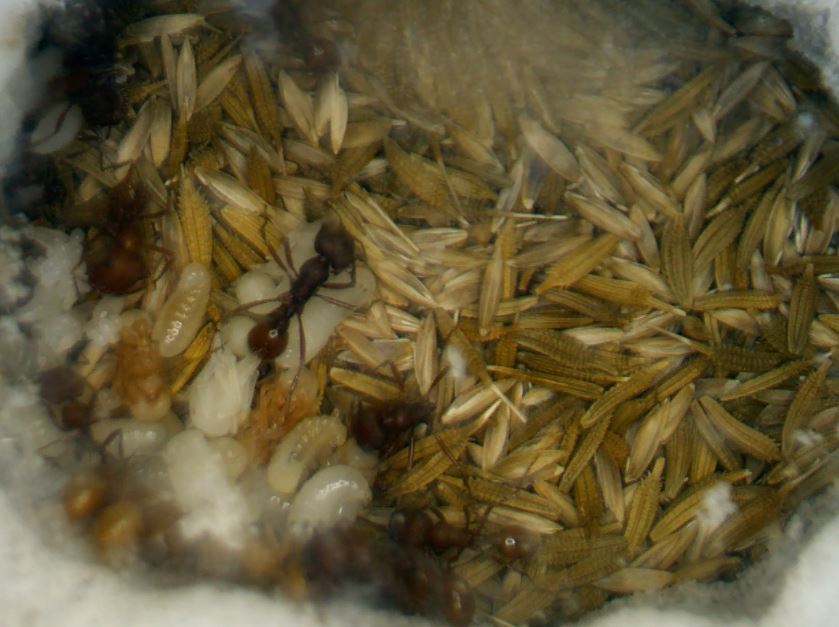
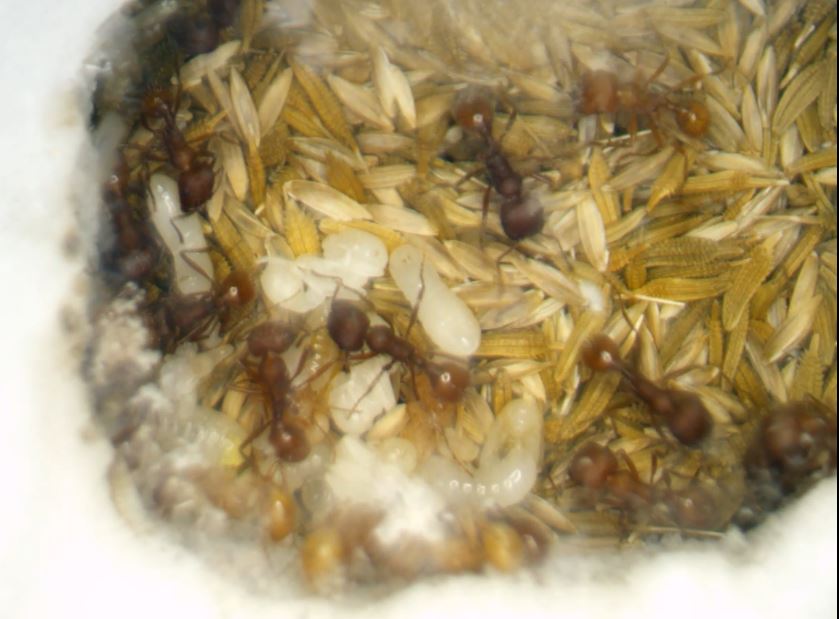
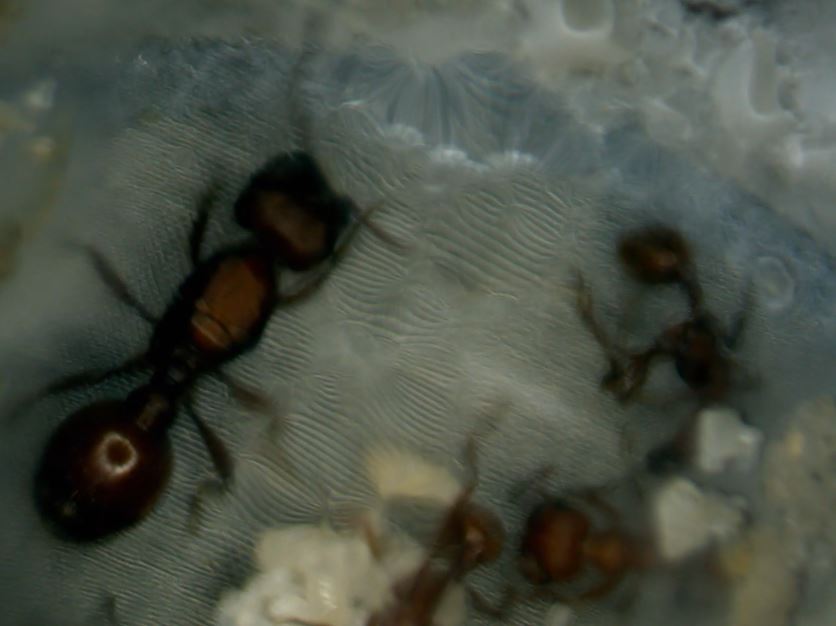
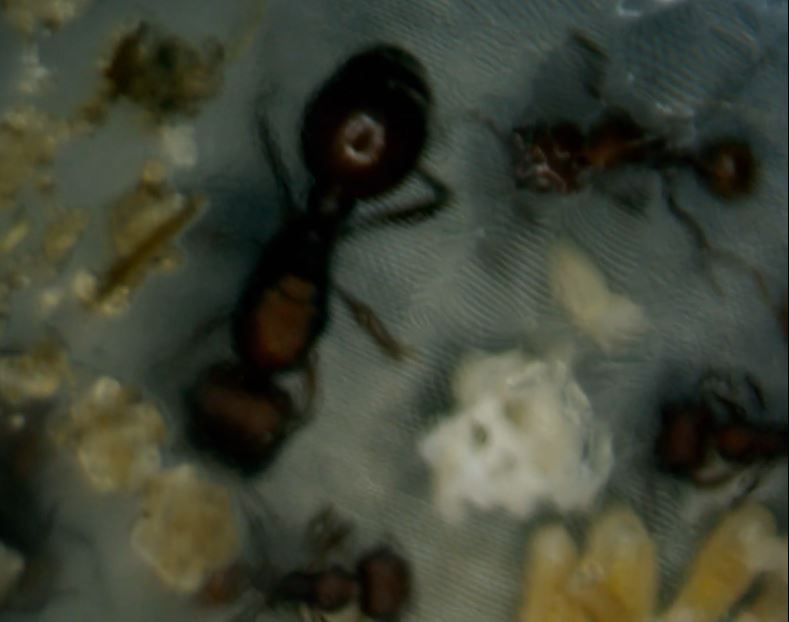
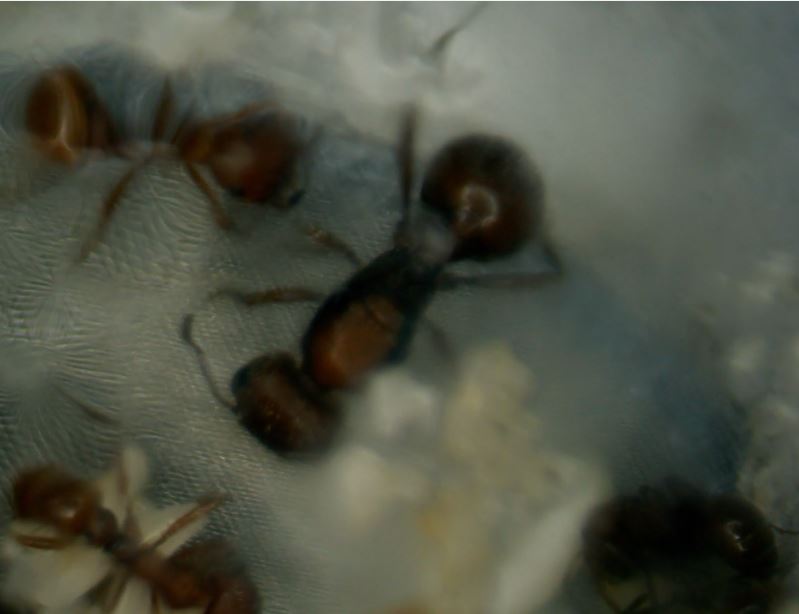
Pogonomyrmex occidentalis (1) | Camponotus pennsylvanicus (6) | Lasius aphidicola (4) | | Tapinoma sessile (3) | Lasius spp. (niger group) (2)
Timeline of the nest colonization (so far)
July 11

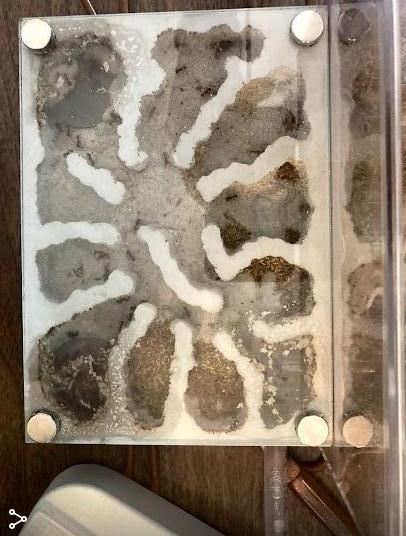
Edited by Arachnids, September 2 2021 - 7:10 AM.
Pogonomyrmex occidentalis (1) | Camponotus pennsylvanicus (6) | Lasius aphidicola (4) | | Tapinoma sessile (3) | Lasius spp. (niger group) (2)
I recommend not overwatering your water towers, and putting the heat cable on the top of the nest. It will help prevent moisture build up, and thus the colony won't gum up the glass. Also, I'd put the heat cable over chambers farther away from the water towers, if possible.
Edited by TacticalHandleGaming, September 2 2021 - 7:06 AM.
Currently kept species
L. neoniger, P. occidentalis, C. modoc, C. novaeboracensis, C. vicinus, T. immigrans, A. occidentalis, S. molesta, P. imparis, M. kennedyi, M semirufus, F. pacifica, P. californica, M. ergatogyna.
Previously kept species
T. rugatulus, B. depilis.
Looking for
Myrmecocystus pyramicus, Myrmecocystus testaceus
Pheidole creightoni, Pheidole inquilina, Crematogaster coarctata, Crematogaster mutans
I recommend not overwatering your water towers, and putting the heat cable on the top of the nest. It will help prevent moisture build up, and thus the colony won't gum up the glass. Also, I'd put the heat cable over chambers farther away from the water towers, if possible.
Good to know. I do have my cable on the furthest chambers from the water towers. However, I will try moving the cable to the top of the setup/
Pogonomyrmex occidentalis (1) | Camponotus pennsylvanicus (6) | Lasius aphidicola (4) | | Tapinoma sessile (3) | Lasius spp. (niger group) (2)
Observations on Graveyard Behavior
Workers carry dead individuals to the same "trash pile" they use for seed hulls and feces. This happens to be right against the outworlds nestmate port.
Image from Sept. 2
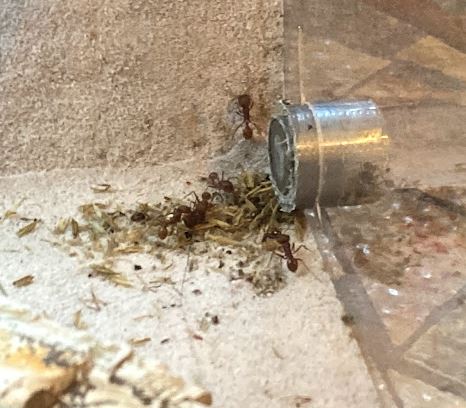
Workers also carry individuals that are not dead but appear to be injured or dying. On one occasion, I noticed an ant that was injured getting carried by a worker to the trash pile. The injured ant seemed to resist as it pushed back with its legs as if to say "No! I'm not dead yet stupid!"
This photo shows the injured ant, curled up at the bottom of the frame, and the worker that will soon be carrying it just above.
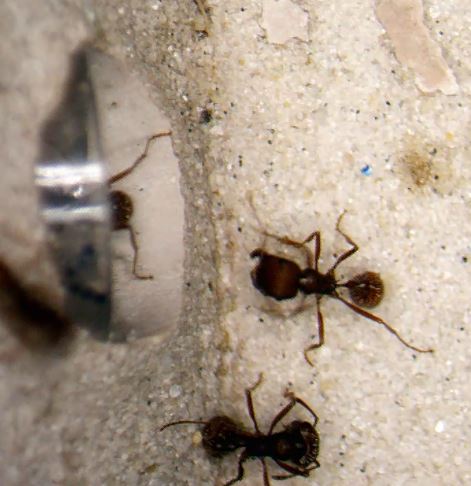
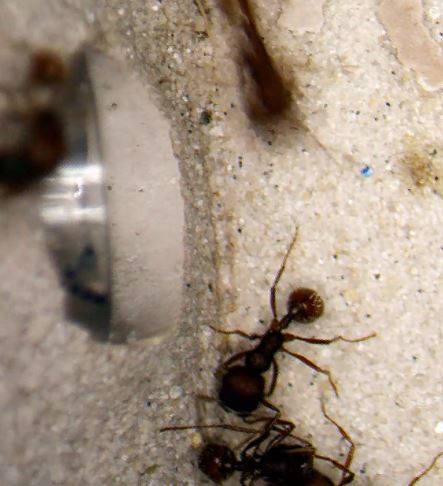
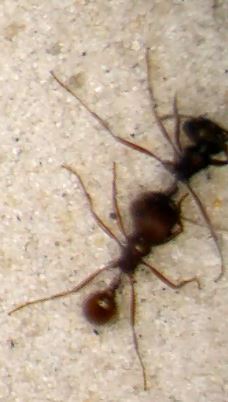
Pogonomyrmex occidentalis (1) | Camponotus pennsylvanicus (6) | Lasius aphidicola (4) | | Tapinoma sessile (3) | Lasius spp. (niger group) (2)
So yesterday (perhaps too impulsively) I fed the colony a small cricket from my local pet shop. They enthusiastically accepted the protein, but to my surprise, they brought the entire cricket into the nest. Not only that, but after checking the nest a few hours later, the cricket was no where to be found. Not in the nest nor the outworld. I really hope I didn't offer too much protein for this small of a colony. And I hope they didn't bury the cricket in their seed stores.
[Photos coming]
Edited by Arachnids, September 4 2021 - 2:32 PM.
Pogonomyrmex occidentalis (1) | Camponotus pennsylvanicus (6) | Lasius aphidicola (4) | | Tapinoma sessile (3) | Lasius spp. (niger group) (2)
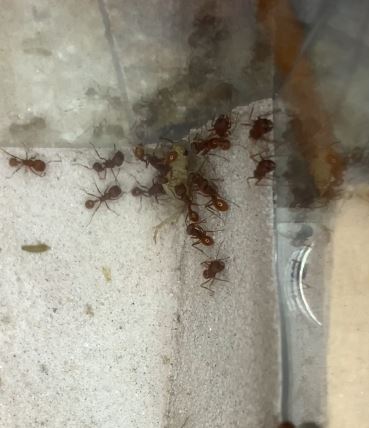
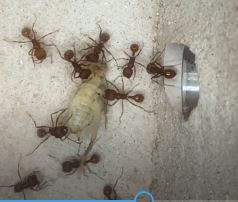
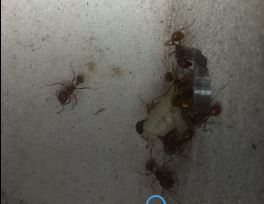
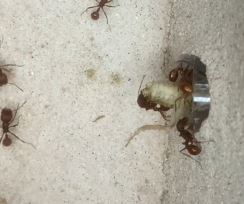
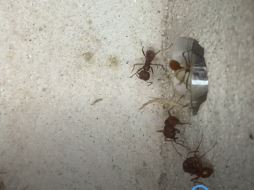
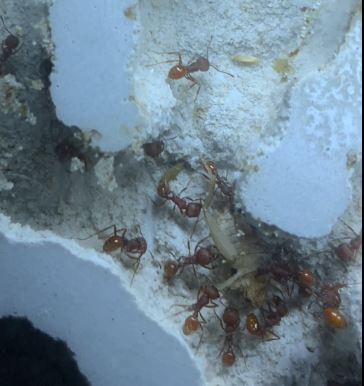
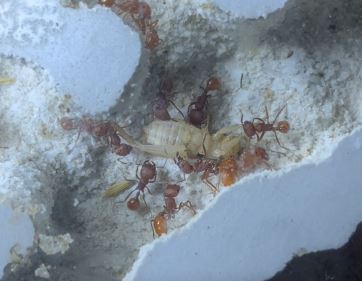
Pogonomyrmex occidentalis (1) | Camponotus pennsylvanicus (6) | Lasius aphidicola (4) | | Tapinoma sessile (3) | Lasius spp. (niger group) (2)
Nest update
September 3
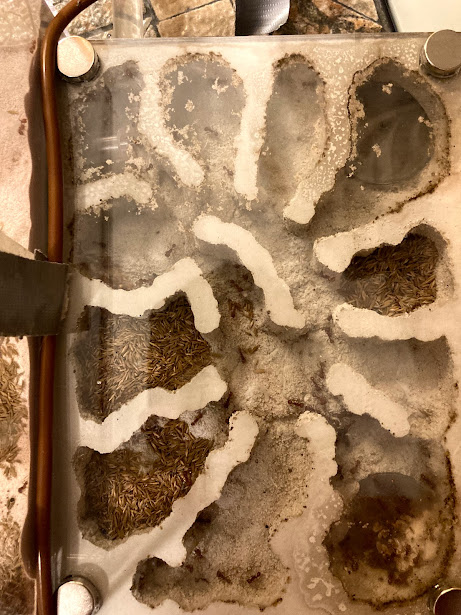
September 4
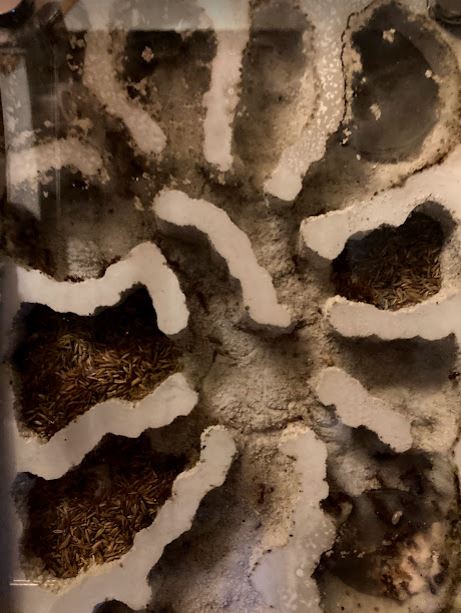
Pogonomyrmex occidentalis (1) | Camponotus pennsylvanicus (6) | Lasius aphidicola (4) | | Tapinoma sessile (3) | Lasius spp. (niger group) (2)
I tried feeding poppy seeds and the pile was gone in less than 12 hours. I guess they seem to like it.
My pogonomyrmex occidentalis colony has a diet of sunburst ant nectar, dandelion seeds, chia seeds, poppy seeds, fruit flies, and fish food flakes. They love it all. I put fluon in their outworld, as they can actually jump a bit, and have attempted to escape. Mack posted a video demonstrating that in the FB group.
Edited by Arachnids, September 4 2021 - 2:46 PM.
Pogonomyrmex occidentalis (1) | Camponotus pennsylvanicus (6) | Lasius aphidicola (4) | | Tapinoma sessile (3) | Lasius spp. (niger group) (2)
Nice. I may give my girls some poppy seeds.
As for the queen being active I think that's very typical for Pogonomyrmex. She never really lies down and just rests like my camponotus queens who are big lazy bones. She marches from one place to the next and if I make a vibration she's on her way to check it out. I think they are just aggressive.
I have my Pogonomyrmex in a "traditional style" sand frame "ant farm" made of glass, and they also have a small nest area that they outgrew months ago but I don't know how to get them to totally leave.
Starting this July I'm posting videos of my ants every week on youTube.
I like to make relaxing videos that capture the joy of watching ants.
If that sounds like your kind of thing... follow me >here<.
Sept. 5
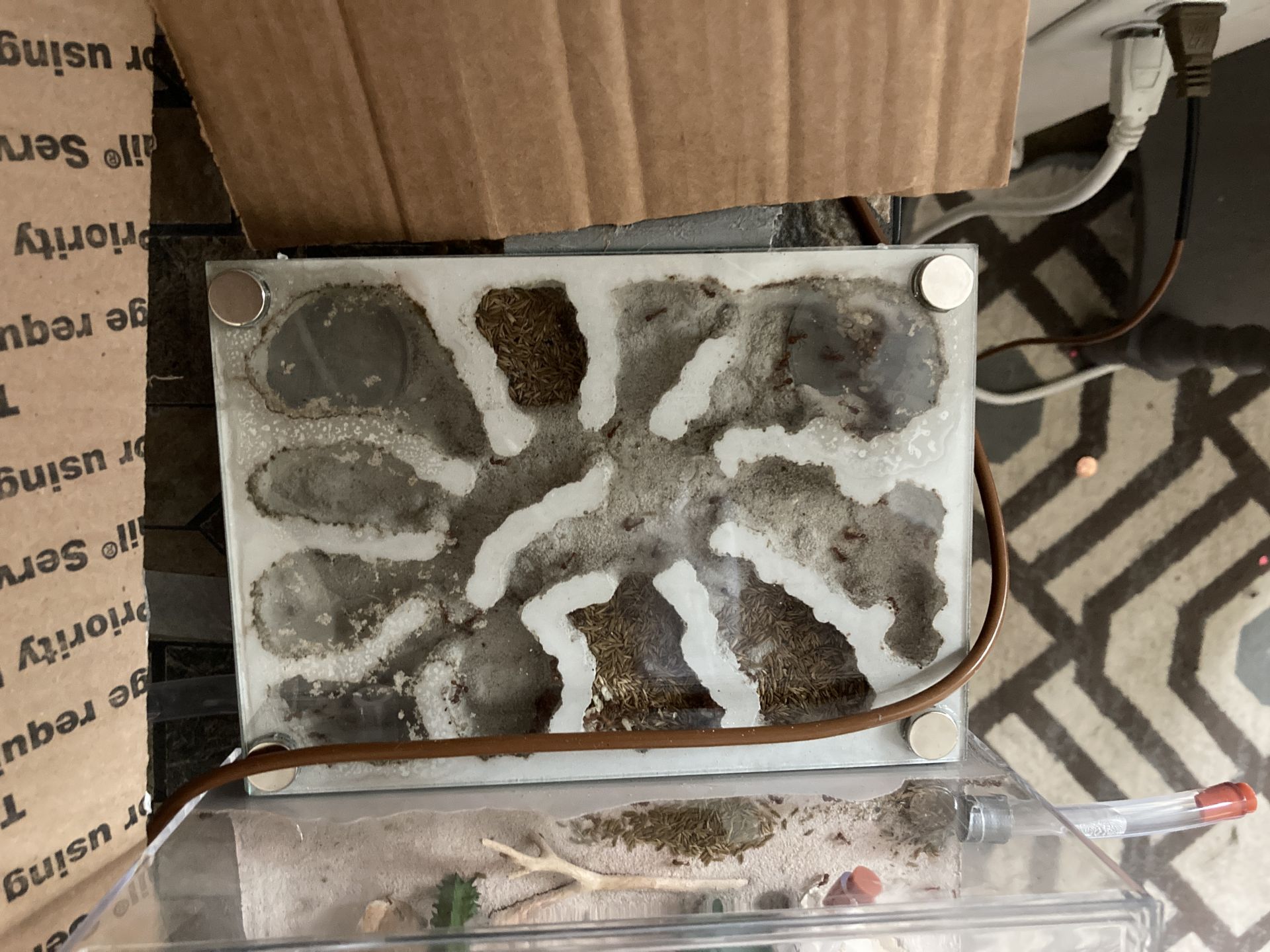
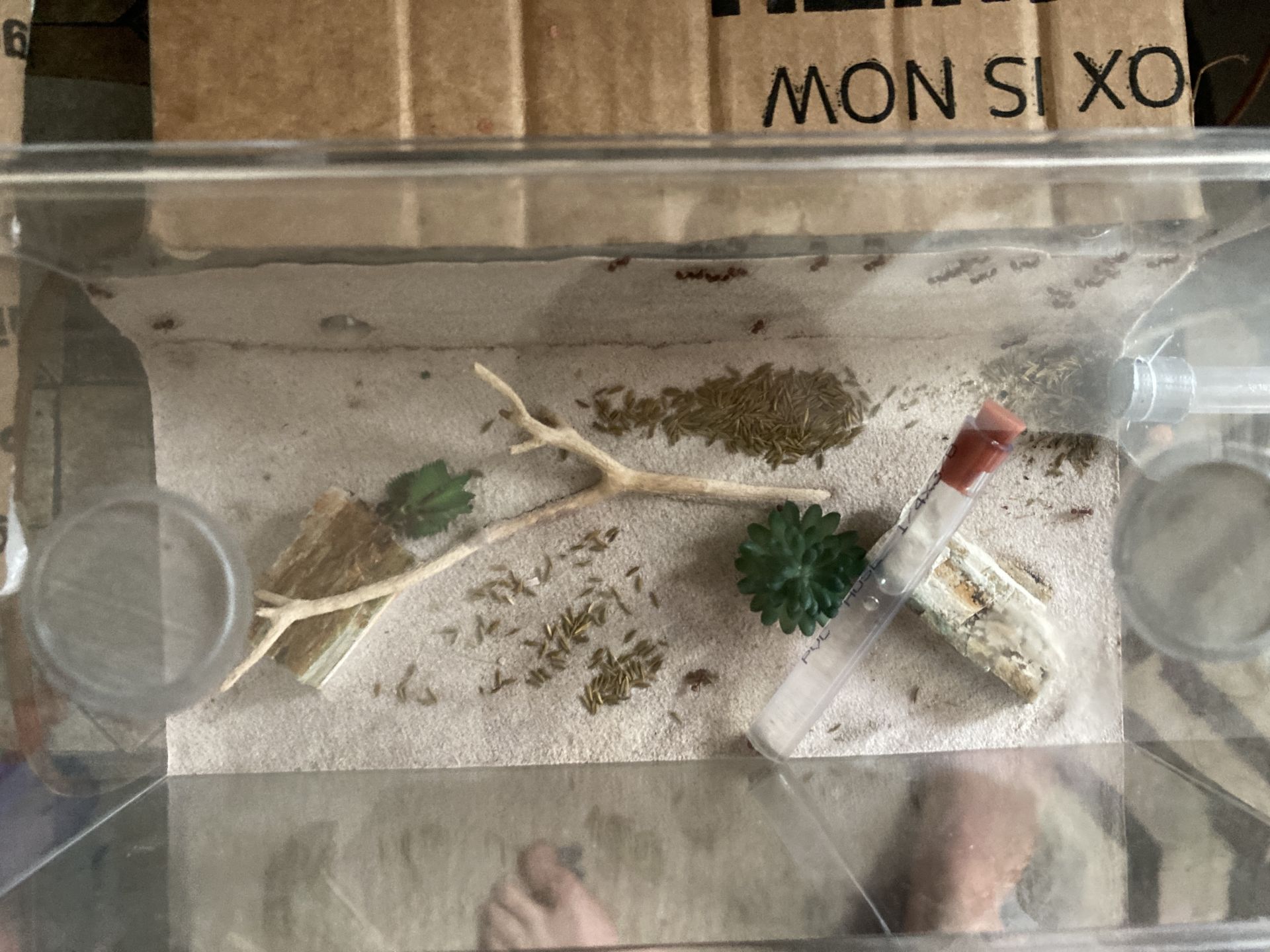
Feeding
After the colony accepted the poppy seeds I decided I should withhold seeds for a little bit. Their stores are filling up with seeds and there's more seeds (either dandelion or bluegrass) in the outworld that they haven't touched yet.
Also, I purchased other seeds from my grocery store to experiment with:
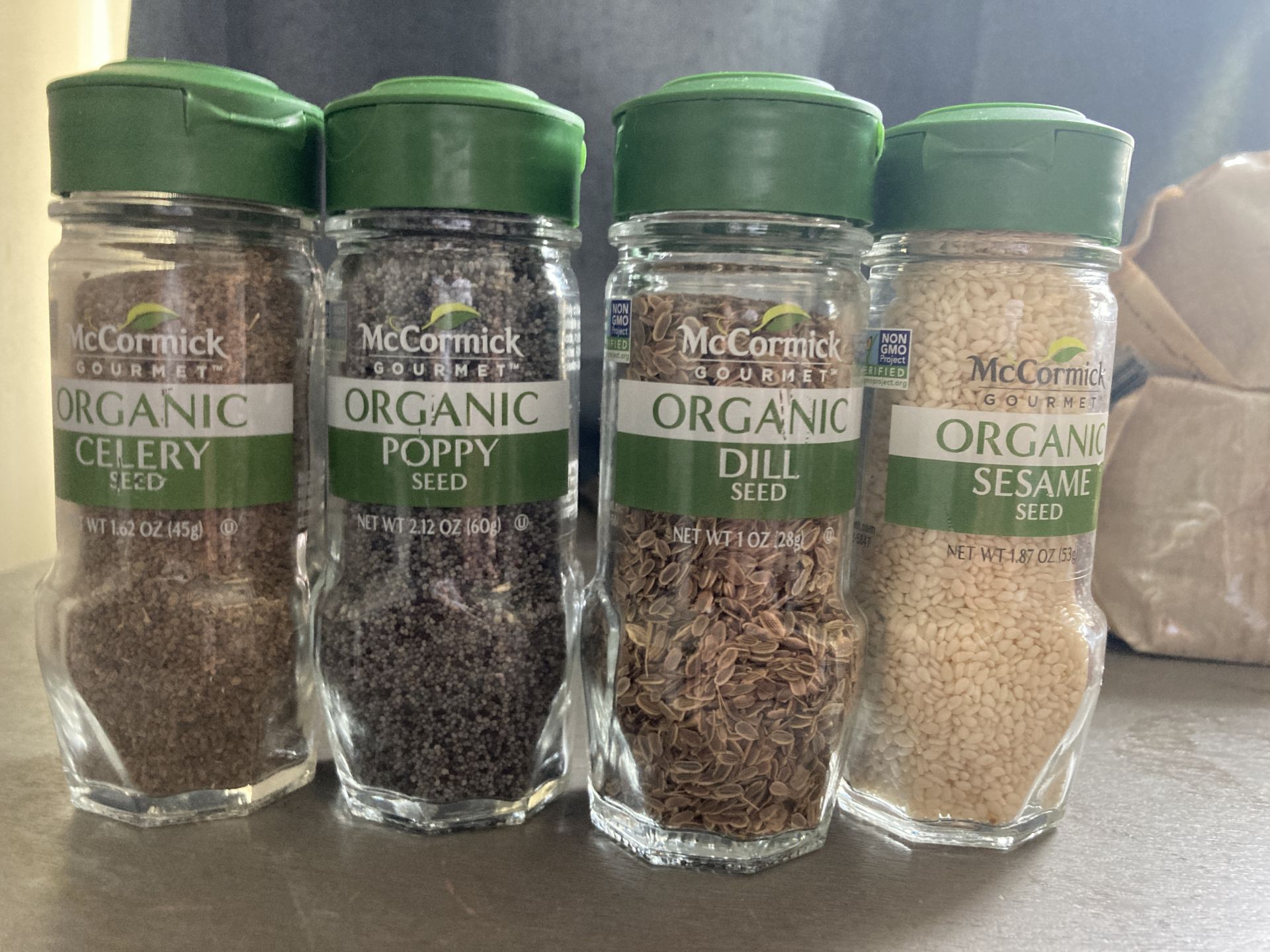
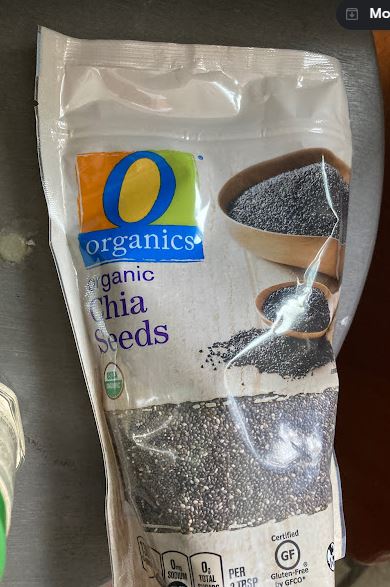
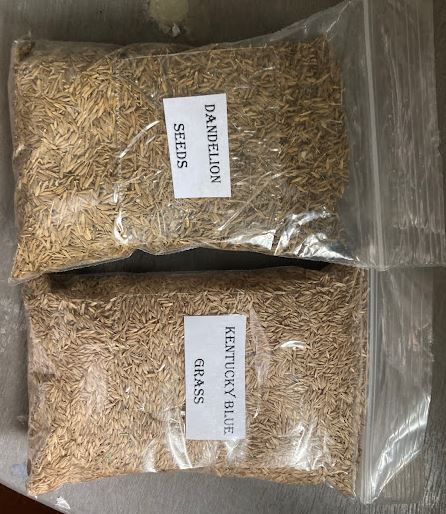
Pogonomyrmex occidentalis (1) | Camponotus pennsylvanicus (6) | Lasius aphidicola (4) | | Tapinoma sessile (3) | Lasius spp. (niger group) (2)
I recently did a little watercolor study on the temperature gradient in the nest. The temp ranged from 72-82 F
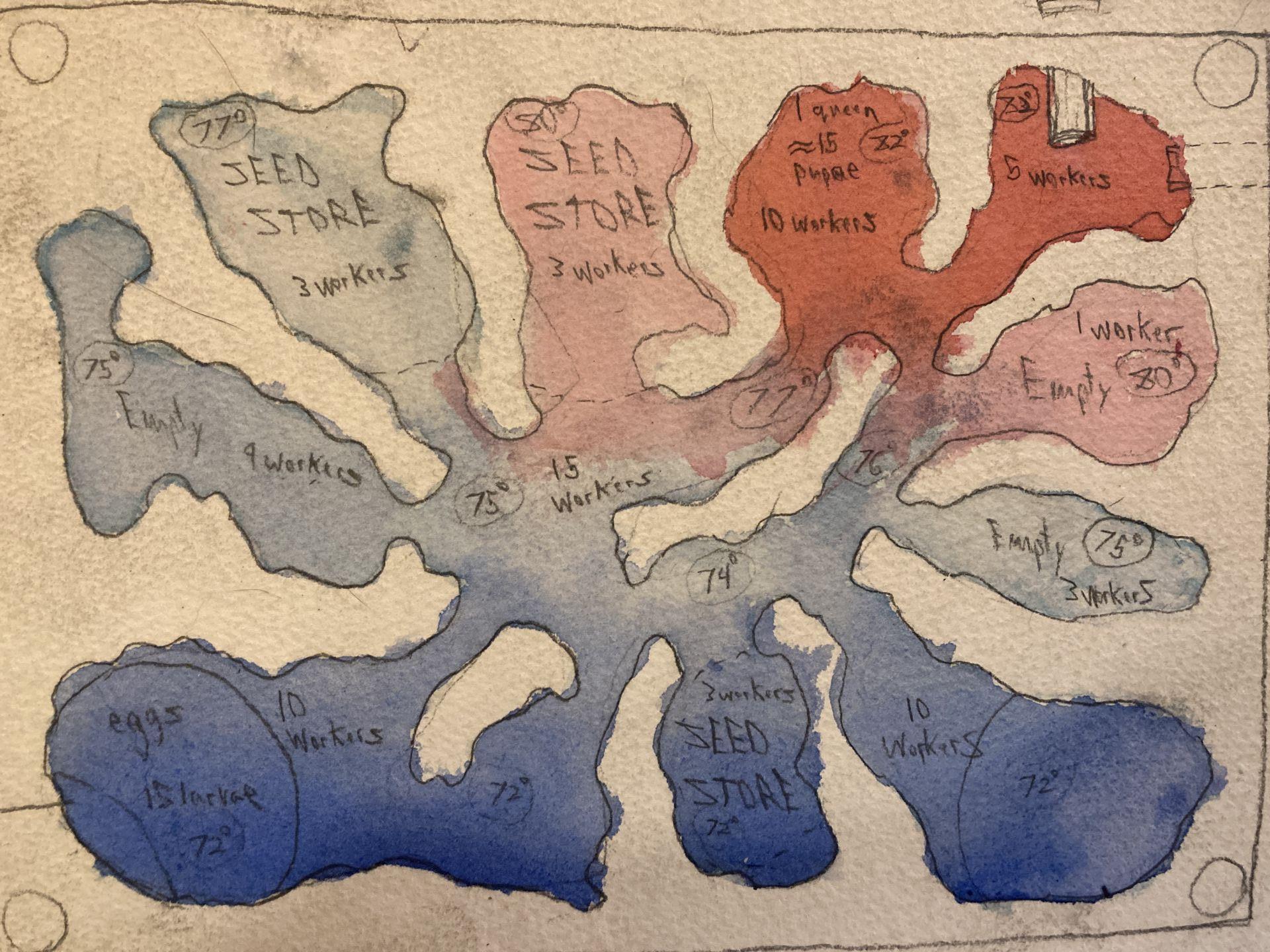
Pogonomyrmex occidentalis (1) | Camponotus pennsylvanicus (6) | Lasius aphidicola (4) | | Tapinoma sessile (3) | Lasius spp. (niger group) (2)
I look forward to watching your colony grow. I feel like our queens are racing each other now. ![]()
Currently kept species
L. neoniger, P. occidentalis, C. modoc, C. novaeboracensis, C. vicinus, T. immigrans, A. occidentalis, S. molesta, P. imparis, M. kennedyi, M semirufus, F. pacifica, P. californica, M. ergatogyna.
Previously kept species
T. rugatulus, B. depilis.
Looking for
Myrmecocystus pyramicus, Myrmecocystus testaceus
Pheidole creightoni, Pheidole inquilina, Crematogaster coarctata, Crematogaster mutans
0 members, 1 guests, 0 anonymous users